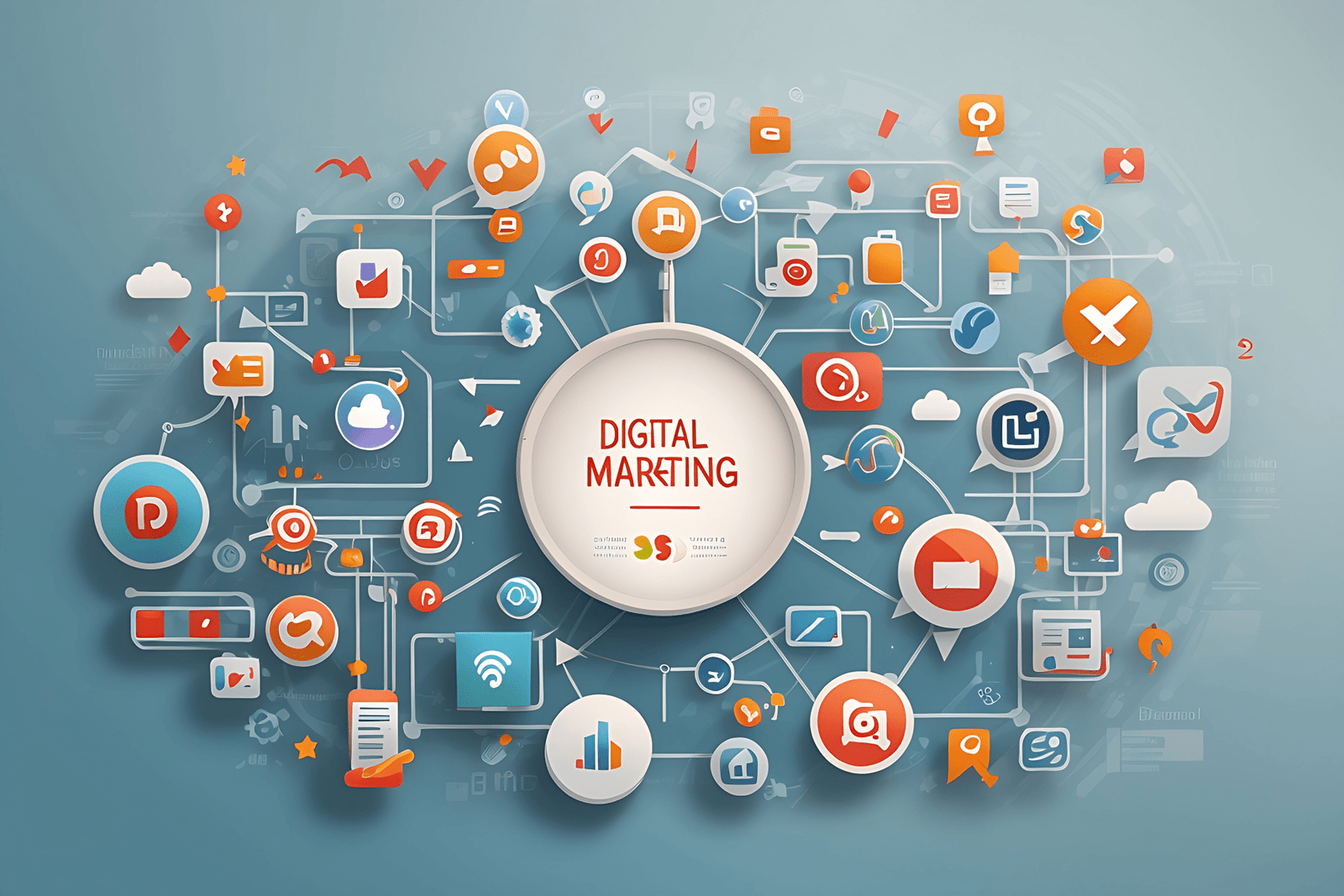The world of business has evolved significantly in the past few decades, especially with the rise of digital technology. Businesses, especially small businesses, need to stay ahead by leveraging various tools and platforms to reach their target audience. One of the most powerful methods is utilizing social media marketing. This article will provide an in-depth understanding of how to boost your business on social media, and we’ll explore different strategies, social media marketing tips, and tools that will help you in your social media marketing efforts.
Social Media Marketing: An Overview
Social media marketing refers to the utilization of social media platforms and websites to promote a product or service. Today, social media sites have become a part of our daily lives, making them a fertile ground for marketing. According to Statista, as of 2023, the number of social media users is expected to reach 3.43 billion, and a significant proportion of these users are potential customers.
While using social platforms for marketing seems straightforward, it can be a challenging task. Creating engaging content, building a loyal following, scheduling posts, tracking performance, and adjusting strategies require time, skill, and the right tools. Let’s delve into how we can overcome these challenges and effectively boost your small business through social media marketing.
Identifying the Right Social Media Platforms for Your Business
Choosing the right social media platforms for your business is a crucial first step in your social media marketing strategy. Different social platforms cater to different age groups and interests. Hence, you should identify where your target audience spends most of their time online.
For instance, Instagram is popular among younger users, while LinkedIn is more prevalent among business professionals. Similarly, YouTube videos are preferred by people who want detailed information or tutorials. Therefore, understand where your potential customers are and create a presence on those social platforms.
Building a Strong Social Media Presence

A strong social presence isn’t just about having social media accounts on every platform. It’s about consistently posting relevant and engaging content, interacting with your followers, and responding to queries and complaints promptly.
Here are some key points to consider while building a strong online presence:
Content Creation and Content Strategy
Developing a well-planned content strategy is the cornerstone of effective social media marketing. This process involves understanding what kind of content resonates with your audience and crafting content that aligns with your brand’s voice and message. A well-structured content strategy can increase brand awareness, bring in new customers, and retain existing customers.
First, identify what type of content your target audience finds engaging. This could be blog posts, how-to guides, infographics, videos, or a combination of these. The content should provide value to your audience, solve a problem they have, or entertain them.
Social media analytics tools like Google Analytics can provide valuable insights into which blog posts or pages on your website are popular, allowing you to understand what your audience prefers. Sprout Social and similar social media marketing tools can also provide insights into which of your social posts have received the most engagement.
Next, planning your content in advance with a social media calendar can ensure you’re consistently posting across your social media channels. The content calendar allows you to visualize how your content is distributed throughout the month and ensures that you are diversifying your posts to keep your audience engaged.
Remember, consistency is key in social media marketing. Regularly active channels are more likely to gather a loyal following, increase engagement, and help your audience recognize your brand.
Visual Content
In the fast-paced world of social media, visuals are crucial for grabbing your audience’s attention. Visual content, such as images, infographics, and videos, can significantly increase engagement on your social posts. Studies have shown that social posts with images or videos receive more likes and shares compared to text-only posts.
Various tools like Canva, Adobe Spark, or Piktochart can assist in creating professional and visually appealing content. These tools provide numerous templates, making it easy for even non-designers to create attractive graphics.
Remember to stay consistent with your brand’s visual identity. Your choice of colors, fonts, and style of imagery should reflect your brand and be consistent across all your social platforms.
User-Generated Content
User-generated content (UGC) is any form of content, like videos, pictures, reviews, and more, that is created by consumers and shared on social platforms. UGC can act as powerful social proof, showing your prospective customers that others trust and value your product or service.
Encouraging UGC not only saves you content creation time but also boosts customer engagement and loyalty. This can be achieved by running a photo contest, sharing customer reviews, or featuring user-generated photos or videos of your product in use.
For instance, you could encourage your customers to share photos of them using your product with a specific hashtag, which you can then re-share on your socials. This provides validation for your product and helps to increase your brand visibility.
Content Calendar
A content calendar is a schedule of what content will be published across your different social platforms. It includes what will be posted, when it will be posted, and on which platform.
The advantages of having a content calendar are manifold. It helps you to stay organized, ensures you are posting regularly, and allows you to plan for special dates or events (such as holidays or product launches).
Your content calendar should ideally include all your social channels and detail the date and time each post will go live. It can also include details of the post content, any images or videos to be included, and the post’s goals (such as driving traffic to a blog post or promoting a product).
Automation tools, such as Buffer or Hootsuite, can help in scheduling posts at optimal times when your audience is most active. This ensures your posts are reaching the maximum number of people, thereby increasing brand awareness and driving more traffic to your site.
Employee Advocacy

Employee advocacy involves encouraging your employees to share your company’s social posts on their personal social media accounts. This strategy can help your posts reach a wider audience, boost brand visibility, and increase brand awareness among their network.
Employees can share blog posts, product announcements, or company news, thus acting as trusted brand ambassadors. Encourage your team to like, share, and comment on your company’s posts. Their personal network might see these interactions and be prompted to check out your social channels or even become customers.
A platform like LinkedIn can be particularly effective for employee advocacy as it’s a network of professionals who might be interested in your business. Your employees sharing content on their personal LinkedIn can increase your brand’s credibility and reach.
Remember, employee advocacy should be voluntary. It’s about cultivating a company culture where employees feel proud to share their work and your company’s achievements.
Increasing Web Traffic and Brand Awareness through Social Media Marketing
An effective social media marketing strategy can significantly increase web traffic to your website. Here are some strategies you can implement:
Social Media Advertising
Advertising on social platforms has become a fundamental part of successful social media marketing strategies for businesses. Social media advertising allows your business to reach out to potential customers who may not even be aware that your company exists.
Each social media platform offers unique and advanced analytics that provide insights into your target audience’s behavior, including their likes, dislikes, and online activities. This helps businesses to tailor their advertisements and reach out to the right audience who are more likely to be interested in your product or service.
For example, Facebook advertising allows you to target users based on location, age, gender, interests, behavior, and connections. Likewise, LinkedIn offers the opportunity to target business professionals by their job title, industry, company size, and more. Instagram, part of the Facebook family, is a great platform for businesses with visual appeal or for those targeting a younger demographic.
Understanding how to leverage these advertising options effectively can significantly increase your reach, generate leads, and ultimately drive sales. However, remember that successful social media advertising requires ongoing testing and optimization. Regularly review the performance of your ads and make the necessary adjustments for maximum effectiveness.
Engaging with Followers
The ability to directly engage with your followers is one of the significant advantages of social media for businesses. Promptly responding to comments and direct messages on your social channels can help build relationships with your audience and increase brand loyalty.
Social networking sites like Facebook, Instagram, and Twitter offer various ways for businesses to interact with their followers. This can range from replying to comments and direct messages, participating in discussions, or even hosting live sessions or Q&As.
Consistent engagement shows your audience that you value their input and are keen on building relationships rather than just promoting your products or services. This creates a sense of community and makes your followers feel more connected to your brand.
Remember, social media is a two-way street. Encourage your followers to engage with your posts by asking questions, soliciting feedback, or hosting contests.
Consistent Branding
Consistency in branding helps your business become more recognizable across social media platforms. This not only means having a consistent name and logo across your social platforms but also maintaining uniformity in your brand’s voice, tone, colors, visuals, and overall messaging.
When your branding is consistent, it reinforces your brand identity every time a potential or existing customer interacts with your brand online. This enhances brand recognition, boosts brand awareness, and builds customer trust.
Think of some of the most successful brands, such as Apple, Nike, or Coca-Cola. Their branding is consistent across all their social channels, making it immediately recognizable to their audience.
Make sure to customize your social media profiles to match your branding. This includes profile pictures, bio, cover photos, and even the tone of your posts.
Cross-Promotion
Cross-promotion involves promoting your social media accounts across different social media platforms. This strategy can help you reach a wider audience, attract new followers, and drive traffic from one social media platform to another.
For instance, you can encourage your Facebook followers to check out your Instagram for more visual content or direct your LinkedIn followers to your Twitter for more frequent updates.
Moreover, don’t limit cross-promotion to social media platforms alone. Leverage other channels such as your website, email newsletters, blog posts, and even your physical store (if applicable) to promote your presence on social media.
Cross-promotion not only maximizes your social media marketing efforts but also ensures your messaging reaches as much of your target audience as possible, increasing your brand’s online visibility. However, while cross-promoting, remember to tailor your message for each platform, considering the unique style and norms of each social channel.
Utilizing Social Media Marketing Tools

There are numerous social media marketing tools available today that can help streamline your social media marketing efforts. Tools like Sprout Social, Hootsuite, and Buffer allow you to manage multiple social media accounts, schedule posts, and provide valuable insights into your social media strategy.
Automation tools can help in scheduling posts at optimal times when your audience is most active. This ensures your social media posts are reaching the maximum number of people, increasing brand awareness, and driving more traffic to your site.
Using Analytics to Measure Social Media Success
Understanding how your social media marketing efforts are performing is crucial in shaping your future strategy. Social media tools like Google Analytics can provide valuable insights into which social media channels are driving the most traffic, what kind of content is getting the most engagement, and much more.
Conclusion
Social media marketing is a powerful tool to increase your brand’s online visibility, connect with your target audience, generate leads, and boost sales. The keys to social media success involve choosing the right social media platforms, creating engaging content, consistently interacting with your followers, and analyzing your performance for continuous improvement. Whether you’re a small business owner or part of a larger corporation, these social media marketing tips can significantly enhance your online presence and overall business success.
Don’t forget, social media trends keep changing, and so should your social strategy. Keep an eye on new features, changes in algorithms, and evolving user behavior. The flexibility to adapt to these changes can help keep your social media marketing strategy fresh and effective.
Remember, Rome wasn’t built in a day, and neither will your online presence. Be patient, keep testing different strategies, and you will see gradual growth in your social media channels. Here’s to your social success!
Elevate Your Social Presence with RTP Social Solution

You’ve taken the first step by reading this comprehensive guide on boosting your business on social media. Now it’s time to implement these strategies and watch your brand visibility soar. But remember, a successful social strategy involves constant monitoring, adjusting, and staying up-to-date with ever-changing social media trends.
If all of this sounds overwhelming, don’t worry, we’re here to help. At RTP Social Solution, we specialize in crafting tailor-made social media strategies to connect your brand with your target audience, building relationships that translate into business growth.
With our vast expertise across all major platforms, we help you navigate the world of social media, ensuring your business gets the visibility it deserves. From creating compelling content and maximizing user engagement to leveraging advanced analytics for highly targeted advertising, we’ve got you covered.
Ready to elevate your social media game? Reach out to us today and let’s start your journey towards success.




